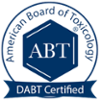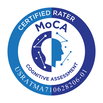Link to original story appearing in Medicalxpress
|
According to Professor Andreas Kortenkamp, of Brunel University "An increasing body of science shows a neglect of mixture effects can cause chemical risks to be underestimated". Regulators have long operated under the assumption that if the concentration of each chemical in a mixture does not exceed the recommended exposure limits, that risk for toxicity is low. But, when chemicals share common mechanisms of action they can produce additive or synergistic effects even at exposure leaves below current regulatory limits. The logic behind additive and synergistic effects on the central nervous system is best exemplified by the consequences of drinking alcohol after ingesting benzodiazepines. Since both chemicals act to enhance inhibitory neurotransmission, their combined effect on behavior and consciousness will be greater than that which occurs the same dose of either chemical alone. Physicians and toxicologists who work in Emergency Departments are well aware of this type of interaction. So why can't those involved in creating regulatory policies for chemical constituents of paints, solvents, and pesticides create policies that anticipate these same risks? The answer may be due in part to the fact that unlike alcoholic beverage and benzodiazepines, industrial solvents and pesticides are "not intended for human consumption" and because proper industrial hygiene practices are expected to be sufficient to reduced exposure to levels below the current occupational exposure limits.
Link to original story appearing in Medicalxpress
0 Comments
|
AuthorDr. Marcia Ratner shares and reviews the news. Archives
February 2023
Categories |
 RSS Feed
RSS Feed

